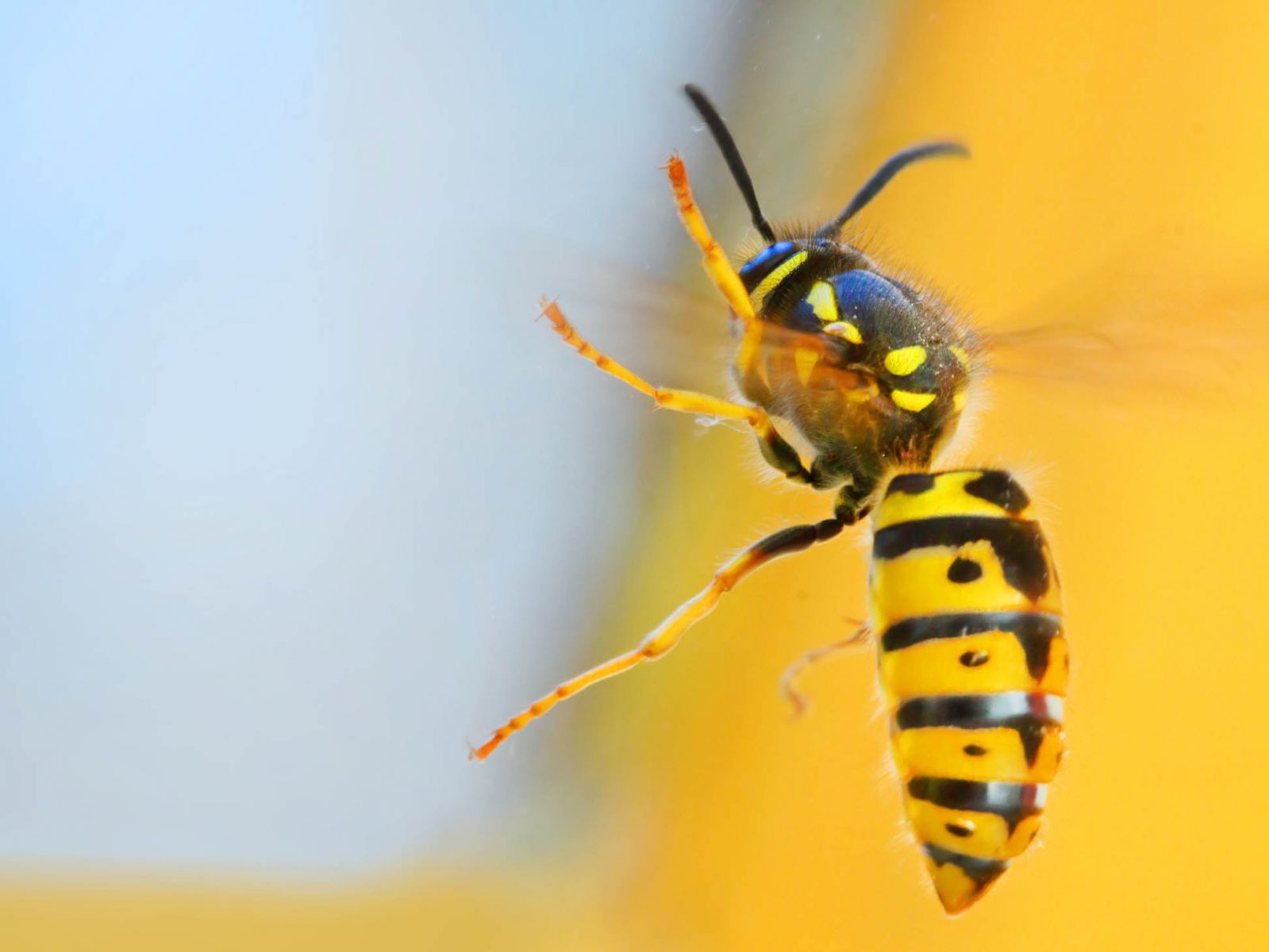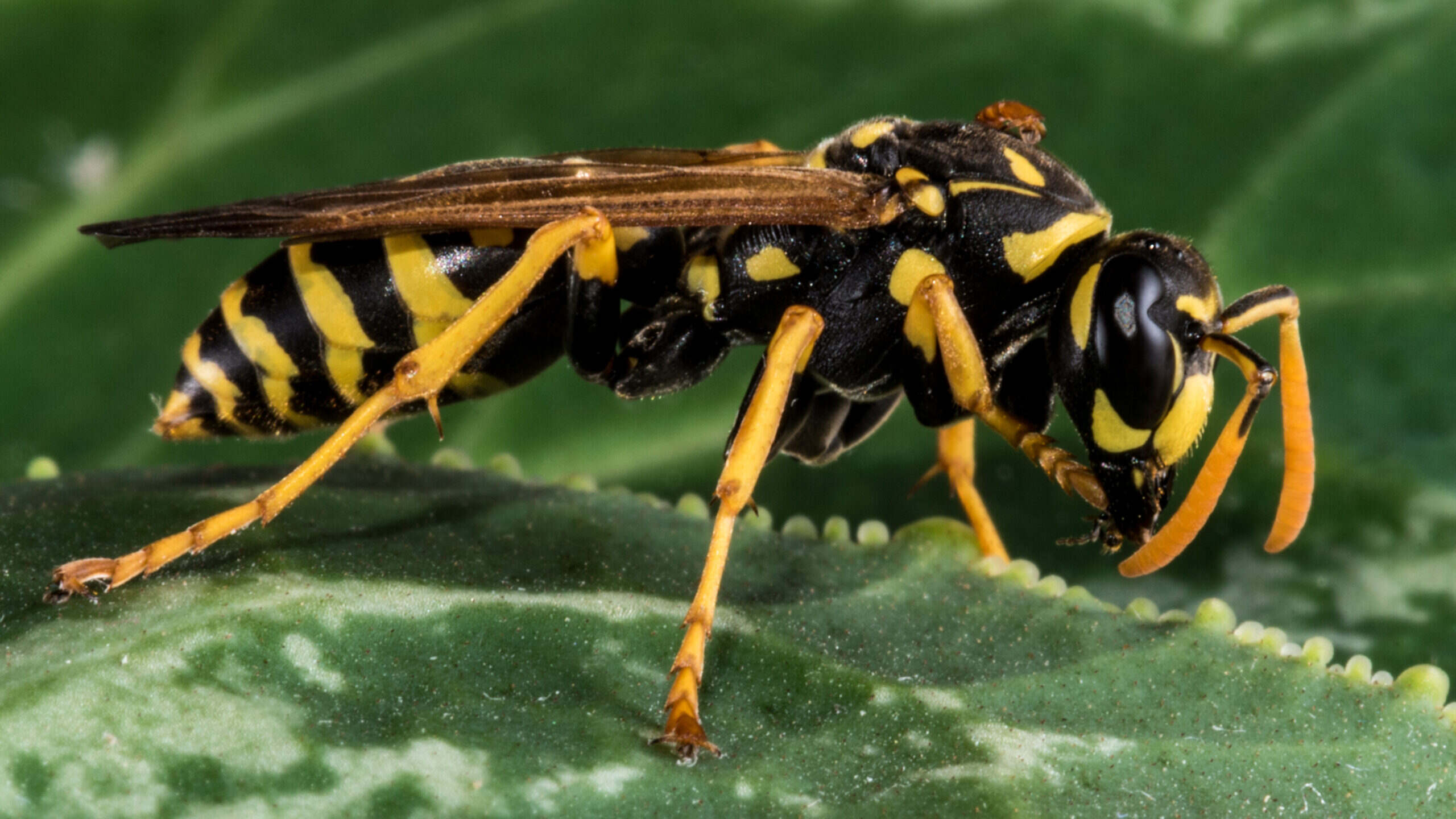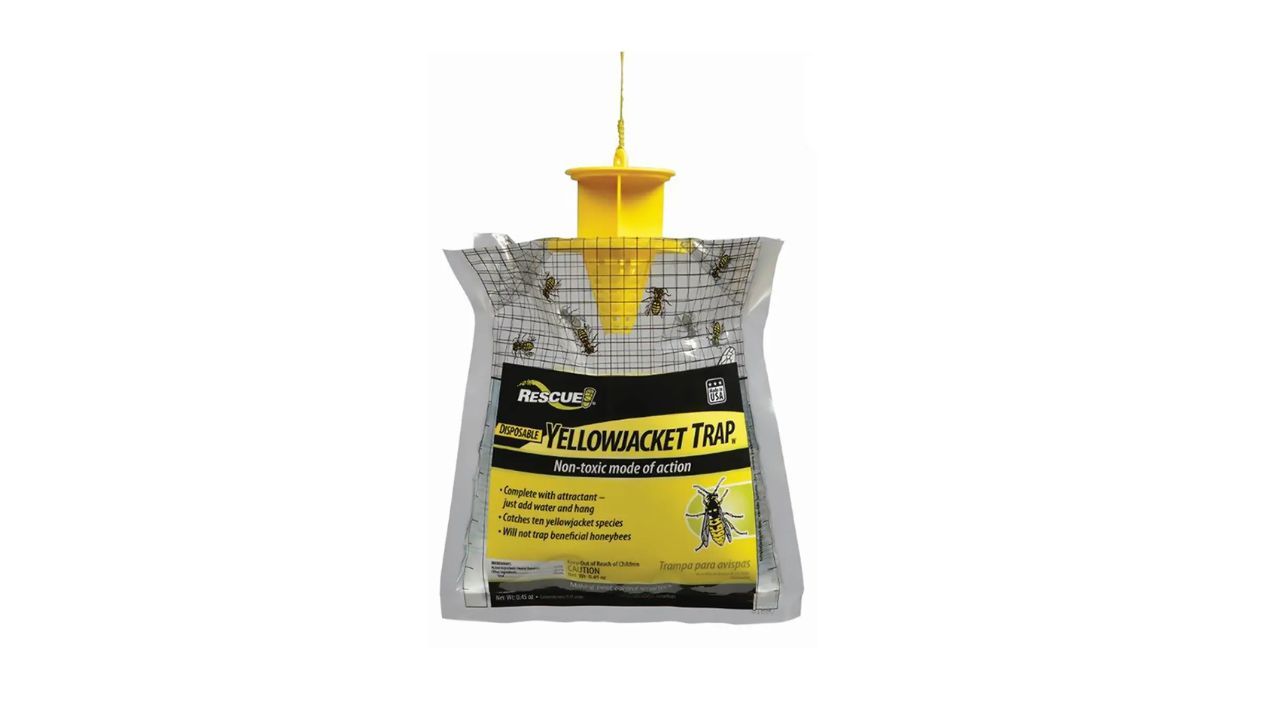Home>Maintenance & Safety>Pest Control Solutions>What Dust Kills Yellow Jackets


Pest Control Solutions
What Dust Kills Yellow Jackets
Modified: August 28, 2024
Discover effective pest control solutions to eliminate yellow jackets and prevent infestations. Learn what dust kills yellow jackets and protect your home.
(Many of the links in this article redirect to a specific reviewed product. Your purchase of these products through affiliate links helps to generate commission for Storables.com, at no extra cost. Learn more)
Introduction
Yellow jackets are notorious for their aggressive behavior and painful stings, making them a nuisance for homeowners and a potential threat to outdoor activities. Dealing with a yellow jacket infestation requires a strategic approach, and understanding the most effective methods for eradicating these pests is crucial. One highly effective solution for eliminating yellow jackets is the use of dust insecticides. In this comprehensive guide, we will delve into the world of yellow jackets and explore the types of dust that can effectively eliminate these pests. We will also uncover the mechanisms through which dust insecticides work to eradicate yellow jackets, as well as the safety precautions that should be taken when using these products. By the end of this article, you will have a thorough understanding of how dust kills yellow jackets and the best practices for utilizing this method to reclaim your outdoor spaces from these aggressive pests.
Key Takeaways:
- Dust insecticides like pyrethroid, carbaryl, and diatomaceous earth effectively eliminate aggressive yellow jackets by disrupting their nervous system or desiccating their exoskeleton, providing a targeted and potent pest control solution.
- Prioritizing safety precautions, such as wearing protective gear and avoiding contamination of food and water sources, is crucial when using dust insecticides to eliminate yellow jackets, ensuring effective pest management while safeguarding human health and the environment.
The Importance of Understanding Yellow Jacket Behavior
Understanding yellow jacket behavior is paramount when it comes to effectively managing and eradicating these aggressive pests. Yellow jackets, scientifically known as Vespula spp., are social insects that live in colonies, typically building their nests in underground burrows, wall voids, or other secluded spaces. These insects are known for their territorial nature and defensive behavior, especially when their nest is disturbed. By comprehending their behavior patterns, individuals can better equip themselves to address yellow jacket infestations with precision and effectiveness.
Yellow jackets exhibit distinct behavioral traits that set them apart from other stinging insects. Unlike honeybees, which can only sting once before dying, yellow jackets are capable of delivering multiple stings, making them particularly hazardous to humans and pets. Additionally, their aggressive nature and ability to release alarm pheromones when threatened can lead to swarming behavior, posing a significant risk to anyone in close proximity to their nest.
Furthermore, understanding the life cycle of yellow jackets is crucial for effective pest control. A typical yellow jacket colony consists of a queen, workers, and males. The queen initiates the colony in the spring, laying eggs that hatch into larvae and eventually develop into adult workers. As the colony grows, the workers assume various responsibilities, such as foraging for food, caring for the young, and defending the nest. By comprehending the life cycle and social structure of yellow jackets, individuals can identify the most vulnerable stages of the colony and target their control efforts accordingly.
Moreover, recognizing the foraging behavior of yellow jackets is essential for implementing targeted pest control strategies. These insects are attracted to sugary substances and proteins, often scavenging for food near outdoor dining areas, garbage cans, and compost piles. By understanding their foraging patterns, individuals can strategically place bait or dust insecticides in areas frequented by yellow jackets, increasing the efficacy of pest control measures.
In essence, gaining insight into yellow jacket behavior empowers individuals to devise proactive and targeted pest control strategies. By understanding their territorial instincts, defensive nature, life cycle, and foraging behavior, individuals can implement pest control measures with precision, minimizing the risk of stings and effectively eradicating yellow jacket infestations.
Identifying the Types of Dust that Kill Yellow Jackets
When it comes to eradicating yellow jackets, dust insecticides have proven to be a highly effective and targeted solution. However, not all dusts are created equal, and it's essential to identify the types of dust that are specifically formulated to eliminate these aggressive pests.
-
Pyrethroid Dusts: Pyrethroid-based dust insecticides are widely recognized for their effectiveness in controlling yellow jackets. Derived from natural pyrethrins found in chrysanthemum flowers, pyrethroid dusts disrupt the nervous system of yellow jackets upon contact, leading to paralysis and eventual death. These dusts are known for their rapid knockdown effect, making them a valuable tool for quickly eradicating yellow jacket colonies.
-
Carbaryl Dusts: Carbaryl, a chemical insecticide commonly known as Sevin, is available in dust form and has demonstrated efficacy in controlling yellow jackets. When applied to the entrance of a yellow jacket nest, carbaryl dust can effectively eliminate foraging workers and eventually reach the queen, disrupting the colony's reproductive cycle and leading to its collapse.
-
Diatomaceous Earth: Diatomaceous earth, a natural and environmentally friendly dust, is composed of microscopic fossilized remains of diatoms. This abrasive dust works by physically abrading the exoskeleton of yellow jackets, leading to desiccation and dehydration, ultimately causing their demise. Diatomaceous earth is a popular choice for those seeking non-toxic and long-lasting control of yellow jackets.
-
Boric Acid Dusts: Boric acid, a versatile insecticide, is available in dust form and can be an effective tool for controlling yellow jackets. When yellow jackets come into contact with boric acid dust, it adheres to their bodies and is ingested during grooming, leading to internal damage and mortality. This slow-acting dust is particularly useful for long-term control of yellow jacket populations.
-
Silica Gel Dusts: Silica gel, a desiccant dust, can be utilized to control yellow jackets by absorbing the waxy layer of their exoskeleton, causing dehydration and death. This dust is known for its long-lasting residual effect, making it a valuable option for sustained control of yellow jacket infestations.
Identifying the most suitable dust for eradicating yellow jackets depends on various factors, including the location of the nest, environmental considerations, and personal preferences regarding chemical or natural control methods. By understanding the unique properties and mechanisms of different dust insecticides, individuals can make informed decisions when selecting the most appropriate product for effectively eliminating yellow jackets from their surroundings.
How Dust Kills Yellow Jackets
Dust insecticides are highly effective in eradicating yellow jackets due to their targeted mode of action. When applied properly, these specialized dusts can swiftly incapacitate and eliminate yellow jacket colonies, providing a potent solution to the challenges posed by these aggressive pests.
Upon contact with dust insecticides, yellow jackets are exposed to potent chemical or natural compounds that disrupt their physiological functions, leading to their demise. The specific mechanisms through which dust kills yellow jackets vary depending on the type of insecticide used.
Pyrethroid dusts, derived from natural pyrethrins, target the nervous system of yellow jackets upon contact. These compounds interfere with the transmission of nerve impulses, leading to paralysis and eventual death. The rapid knockdown effect of pyrethroid dusts makes them particularly valuable for swiftly incapacitating yellow jacket workers and preventing aggressive behavior.
Carbaryl dusts, containing the chemical insecticide Sevin, disrupt the foraging activities of yellow jackets and can reach the queen within the nest. By targeting the reproductive capacity of the colony, carbaryl dusts contribute to the eventual collapse of the yellow jacket population.
Diatomaceous earth, a natural and environmentally friendly dust, functions through physical means. The microscopic fossilized remains of diatoms present in diatomaceous earth act as abrasive particles, abrading the exoskeleton of yellow jackets upon contact. This process leads to desiccation and dehydration, ultimately causing the demise of the affected insects.
Boric acid dusts, known for their versatility, work by adhering to the bodies of yellow jackets. Upon contact, the dust is ingested during grooming, leading to internal damage and mortality. This slow-acting mechanism is particularly useful for long-term control of yellow jacket populations.
Silica gel dusts, functioning as desiccants, absorb the waxy layer of the yellow jacket exoskeleton upon contact. This process causes dehydration and ultimately leads to the death of the affected insects. The long-lasting residual effect of silica gel dusts makes them a valuable option for sustained control of yellow jacket infestations.
In summary, the diverse mechanisms through which dust insecticides eliminate yellow jackets underscore the efficacy and versatility of these pest control solutions. By targeting the physiological functions, nervous system, or exoskeleton of yellow jackets, dust insecticides provide a targeted and potent means of eradicating these aggressive pests from residential and outdoor spaces.
Safety Precautions when Using Dust to Kill Yellow Jackets
When using dust insecticides to eliminate yellow jackets, it is crucial to prioritize safety to minimize risks to humans, pets, and the environment. These potent pest control products contain active ingredients that can pose potential hazards if mishandled or misapplied. By adhering to essential safety precautions, individuals can effectively manage yellow jacket infestations while safeguarding their well-being and that of their surroundings.
Personal Protective Equipment (PPE)
Before applying dust insecticides, it is imperative to don appropriate personal protective equipment (PPE) to shield oneself from potential exposure. This includes wearing long-sleeved clothing, long pants, closed-toe shoes, gloves, and a protective mask or respirator. PPE serves as a barrier against direct contact with the dust and minimizes the risk of inhalation or skin exposure.
Application in Low-Wind Conditions
To prevent unintended dispersion of dust particles and ensure targeted application, it is advisable to apply insecticidal dusts during low-wind conditions. Windy weather can lead to the drift of dust particles, potentially affecting unintended areas or individuals. By choosing a calm day for application, individuals can maintain control over the distribution of the insecticidal dust and minimize environmental impact.
Avoiding Contamination of Food and Water Sources
When applying dust insecticides to eliminate yellow jackets, it is essential to prevent contamination of food and water sources. Covering or removing exposed food items, pet bowls, and water sources before application can prevent potential ingestion of the insecticidal dust by humans, pets, or beneficial insects. Additionally, it is crucial to avoid applying dust insecticides in areas where runoff may reach water bodies to prevent environmental contamination.
Proper Storage and Disposal
Proper storage and disposal of dust insecticides are critical aspects of safety management. These products should be stored in their original containers, tightly sealed, and kept out of reach of children and pets. Additionally, unused insecticidal dusts and empty containers should be disposed of according to local regulations and guidelines to prevent environmental contamination and potential hazards.
Read more: What Kills Dust Mites In A Carpet
Adhering to Label Instructions
One of the most fundamental safety precautions when using dust to kill yellow jackets is to meticulously follow the label instructions provided by the manufacturer. The label contains essential information regarding application rates, safety precautions, first aid measures, and environmental considerations. By carefully reading and adhering to the label instructions, individuals can ensure safe and effective use of dust insecticides.
Consideration for Beneficial Insects
While targeting yellow jackets, it is important to consider the potential impact of dust insecticides on beneficial insects, such as pollinators and natural predators. To minimize unintended harm to beneficial insects, individuals can strategically apply dust insecticides during periods when non-target insects are less active, such as early morning or late evening.
By prioritizing safety precautions when using dust to eliminate yellow jackets, individuals can effectively manage pest infestations while minimizing risks to themselves, their surroundings, and non-target organisms. These precautions not only contribute to safe and responsible pest control practices but also promote environmental stewardship and the well-being of ecosystems.
Conclusion
In conclusion, the effective eradication of yellow jackets through the use of dust insecticides hinges on a comprehensive understanding of yellow jacket behavior, the selection of appropriate dust types, and the implementation of safety precautions. By delving into the intricacies of yellow jacket behavior, individuals can tailor their pest control strategies to target the vulnerabilities and behavioral patterns of these aggressive insects. Identifying the types of dust that effectively eliminate yellow jackets empowers individuals to make informed decisions when selecting the most suitable product for their specific infestation and environmental considerations.
The diverse mechanisms through which dust insecticides eliminate yellow jackets underscore the potency and versatility of these pest control solutions. Whether through disrupting the nervous system, desiccating the exoskeleton, or targeting the reproductive capacity of the colony, dust insecticides provide a targeted and potent means of eradicating these aggressive pests from residential and outdoor spaces.
Furthermore, prioritizing safety precautions when using dust to kill yellow jackets is paramount to safeguarding human health, pets, and the environment. By adhering to essential safety measures, such as wearing personal protective equipment, applying dust in low-wind conditions, and preventing contamination of food and water sources, individuals can effectively manage yellow jacket infestations while minimizing risks and environmental impact.
In essence, the successful eradication of yellow jackets through the use of dust insecticides requires a holistic approach that encompasses knowledge, product selection, and safety consciousness. By integrating these elements, individuals can reclaim their outdoor spaces from the threat of yellow jackets while promoting safe and responsible pest control practices.
Ultimately, the utilization of dust insecticides to eliminate yellow jackets represents a targeted and effective solution that aligns with the principles of precision pest control and environmental stewardship. With a well-rounded understanding of yellow jacket behavior, the selection of appropriate dust types, and a commitment to safety, individuals can confidently address yellow jacket infestations and enjoy outdoor spaces free from the menace of these aggressive pests.
Frequently Asked Questions about What Dust Kills Yellow Jackets
Was this page helpful?
At Storables.com, we guarantee accurate and reliable information. Our content, validated by Expert Board Contributors, is crafted following stringent Editorial Policies. We're committed to providing you with well-researched, expert-backed insights for all your informational needs.














0 thoughts on “What Dust Kills Yellow Jackets”